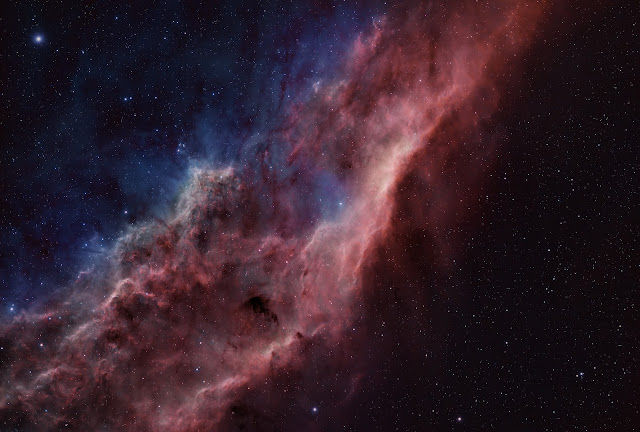As I may have mentioned before on my facebook page and even on here too the last 5 plus weeks of weather have been truly awful. However, 2 nights from Friday last week have been cold and clear but somewhat spoilt by the approaching full moon. So the filter wheel has rotated to the HA filter and the start of 2 projects IC410 & IC405 are born.
IC410 is a dusty
emission nebula located in the constellation of Auriga at about 12.000 light
years from Earth. It is part of a larger star forming region that
also contains the Flaming Star Nebula (IC405). The gas structures in
this picture are lit by the radiation from the open star cluster
Ngc1893 that lies in the center of the nebula. This star cluster is
about 4 million years old, but in astronomical terms it is still very
young, with hot, massive stars. Just right of the star cluster two more
dense structures are visible. Affectionately known as The Tadpoles
these two structures are approximately 10 light years long these
are similar to the famous Pillars of Creation and they are
composed of dust and gas leftover from the formation of the star
cluster and are very likely to give birth to more stars in
the future. As can be seen in the image, these structures point
away from the center of the nebula. This is because of the stellar winds
and radiation pressure from the stars in NGC 1893. The really do look like they
are trying to get back to the centre.
Lets hope for a few more hours of data to complete a Hubble Palette image. Watch this space: Image Details
|






